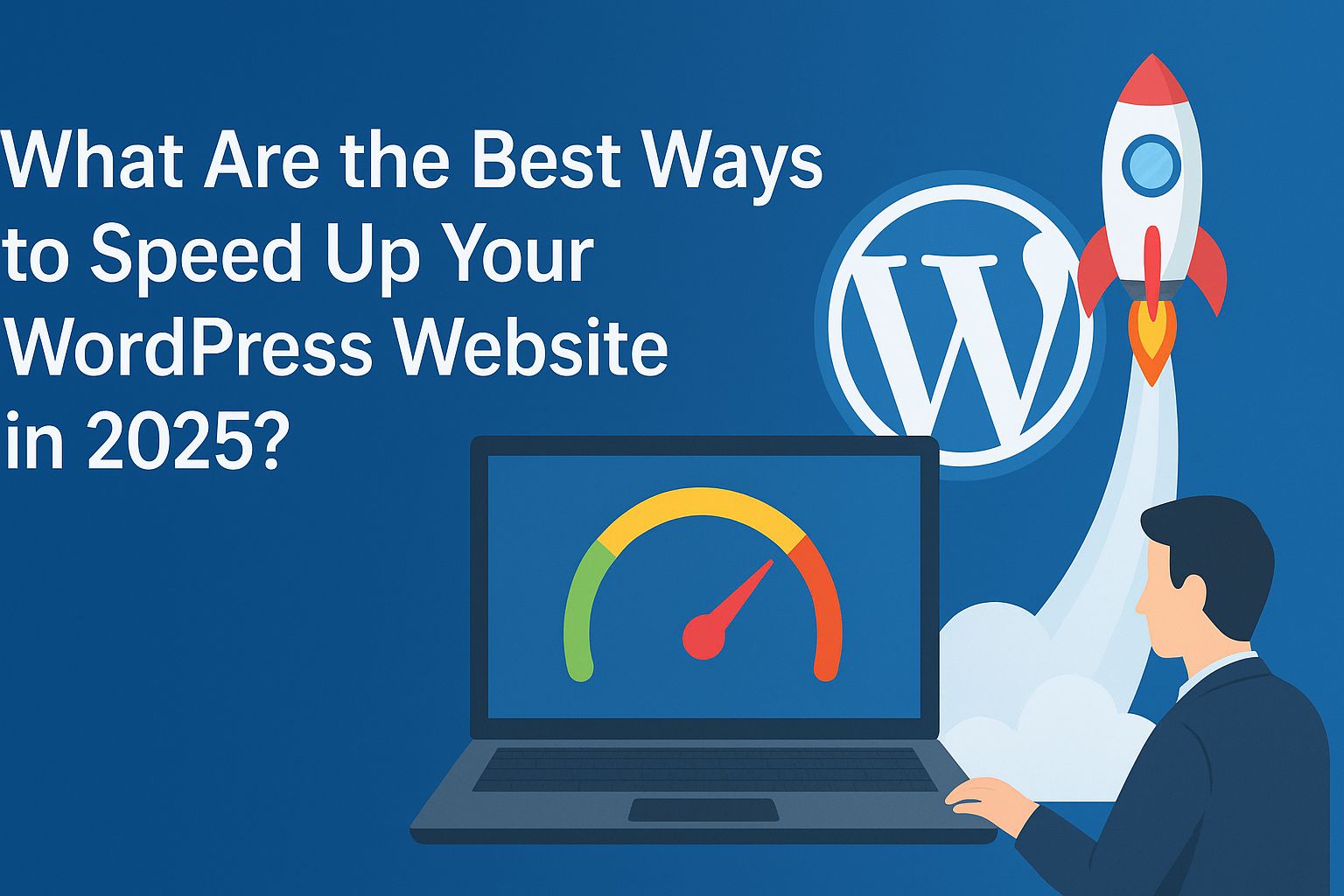What Are the Best Ways to Speed Up Your WordPress Website in 2025?

A slow website can hurt your rankings, increase bounce rates, and drive customers away. In the world of website development, speed isn’t just a technical factor—it’s a critical part of user experience and SEO.
If you’re running a business site, blog, or eCommerce store, knowing how to optimize your site for performance is essential. In this guide, we’ll cover proven techniques to speed up WordPress websites and why speed matters in WordPress website development.
Why Website Speed Matters for WordPress Website Development
When it comes to WordPress website development, speed impacts multiple aspects of your online presence:
- SEO Rankings: Google prioritizes faster-loading websites in search results.
- User Experience: Visitors leave if a site takes longer than 3 seconds to load.
- Conversions & Sales: A 1-second delay can reduce conversions by 7%.
- Mobile Users: With most users browsing from mobile, speed is more crucial than ever.
Proven Techniques to Speed Up Your WordPress Website
1. Choose a Fast and Reliable Hosting Provider
Your hosting provider is the foundation of your site’s performance.
- Opt for Managed WordPress Hosting (like Kinsta, SiteGround, or WP Engine).
- Ensure your host provides SSD storage, caching, and CDN integration.
2. Use a Lightweight WordPress Theme
Heavy, bloated themes slow down performance. For better results in website development, use:
- Astra
- GeneratePress
- Neve
These themes are optimized for speed and SEO.
3. Install a Caching Plugin
Caching reduces the load on your server and improves response time. Popular options:
- WP Rocket (premium, beginner-friendly)
- W3 Total Cache
- LiteSpeed Cache
4. Optimize Images for Faster Loading
High-resolution images can significantly slow down websites.
- Use plugins like Smush or ShortPixel for compression.
- Convert images to next-gen formats (WebP, AVIF).
- Use lazy loading for below-the-fold images.
5. Use a Content Delivery Network (CDN)
A CDN stores your content across global servers, ensuring faster delivery to users worldwide.
- Cloudflare (free + premium options)
- BunnyCDN
- KeyCDN
6. Minify and Combine CSS, JS, and HTML Files
Reducing the size of your site’s code improves load times.
- Use Autoptimize or Asset CleanUp plugins.
- Remove unused CSS and JavaScript.
7. Regularly Update WordPress Core, Plugins, and Themes
Outdated plugins and themes can slow down your website and create security vulnerabilities. Keep everything updated for optimal performance.
8. Database Optimization
Over time, your WordPress database stores unnecessary data.
- Use WP-Optimize to clean up spam comments, old revisions, and overhead data.
9. Limit Plugins and Use Only What’s Necessary
Too many plugins slow down your site. Only install essential tools that are lightweight and well-coded.
10. Enable GZIP Compression
This reduces file sizes, making your site load faster. Most caching plugins provide an easy GZIP compression setup.
